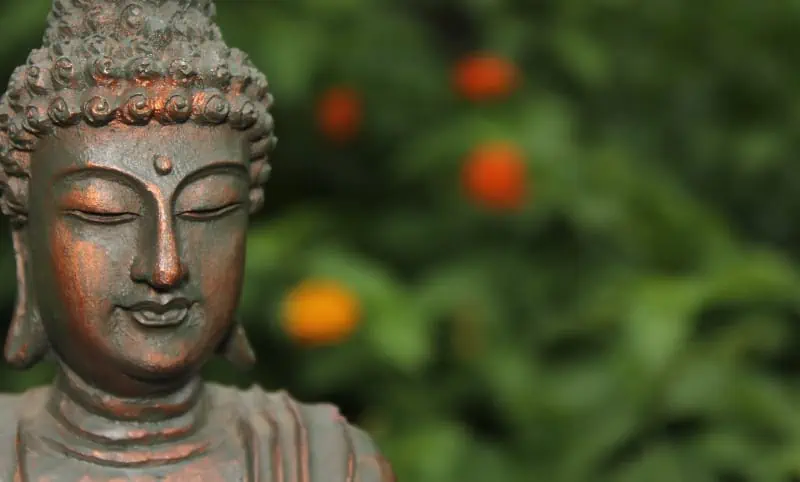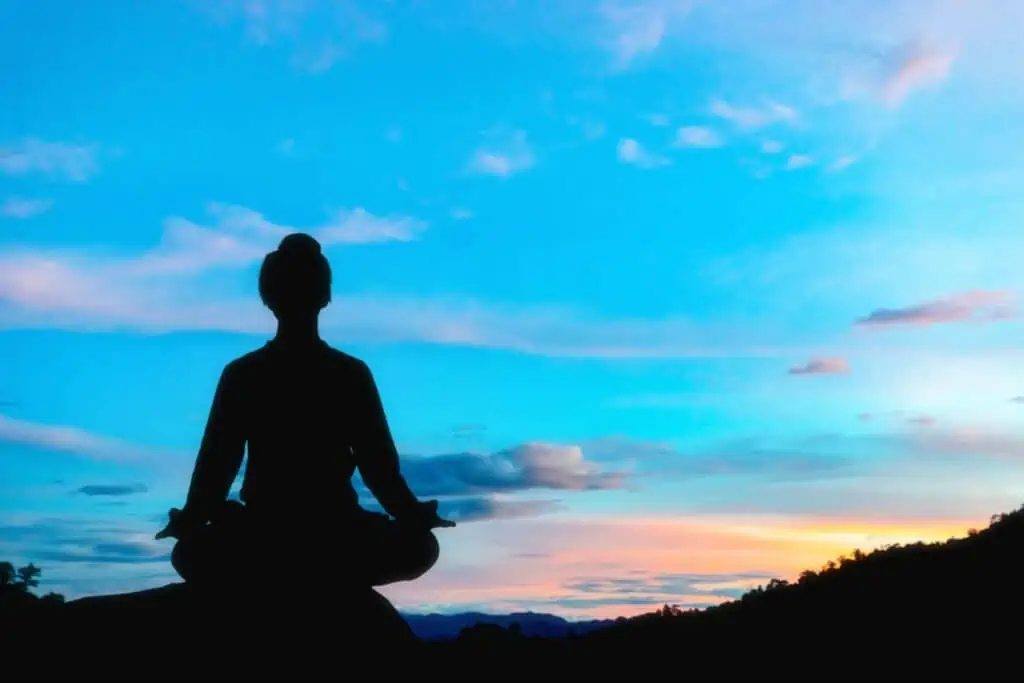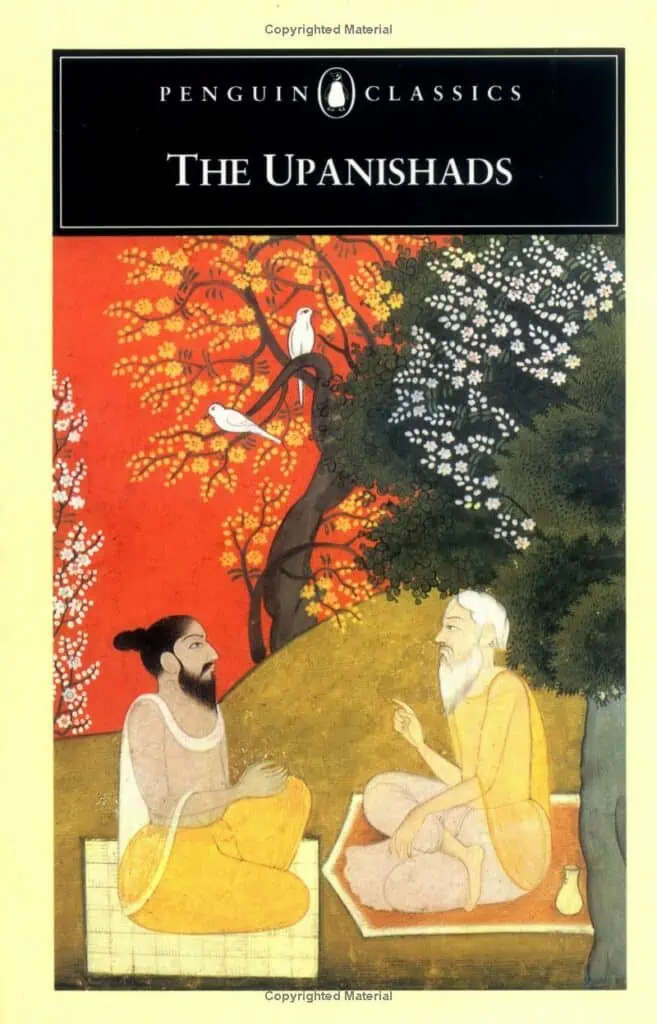Do you think you comprehend consciousness, the mundane existence of living, and the theory of life, death, and the world around us? Think again. Samsara, an age-old philosophical concept, is here to flip your understanding of existence on its head. This theory, evident in early Upanishads and Jainism, doesn’t just live in dusty books or ancient scriptures; it’s a universal view about Atman and reality that shapes our existence and plays a pivotal role in Eastern religions and philosophies.
Understanding samsara isn’t just about intellectual curiosity. It’s a crucial step towards spiritual growth, offering a fresh view of your life path. So, forget what you thought you knew about the cycle of life and death. Immerse yourself in the transformative theory of saṃsāra within Jainism, and let this yoga practice reshape your worldview.
Contents
- 1 Tracing the Origin of Samsara
- 2 Overview: What Is Samsara?
- 3 Role of Samsara in Rebirth Cycle
- 4 What Is Samsara in Buddhism?
- 5 Grasping Samsara’s Meaning in Hinduism
- 6 Wrapping Up Samsara
- 6.1 FAQS
- 6.2 What is the main difference between Samsara in Hinduism and Buddhism?
- 6.3 How can one escape from Samsara?
- 6.4 Is Samsara only present in Eastern religions?
- 6.5 Does belief in Samsara influence daily life practices?
- 6.6 What does understanding the concept of samsara bring to my life?
- 6.7 What Is Samsara?
- 6.8 Was this helpful?
Tracing the Origin of Samsara
To answer the age-old question of what is samsara requires digging deep into ancient times, where you’ll find ‘samsara’ has roots that are as old as dirt. This term first appeared in religious texts and scriptures like the early Upanishads. It describes the cycle of birth, death, and rebirth — the endless cycle of existence.
The Birth of Samsara
- ‘Samsara’ means ‘wandering’ or ‘world.’
- It symbolizes the journey through previous lives and existences.
- The origin of Jainism and its traditions can be traced back to some of the earliest religious texts, introducing the concept of existence.
Over time, this interpretation of “what is samsara” has morphed and changed, just like everything else in life. It’s become a cornerstone for many philosophical concepts, too.
Evolution Over Time
- In the beginning, samsara represented the physical process of being born again.
- Over time, Jainism evolved into a metaphorical concept about spiritual growth, incorporating traditions, the cycle of saṃsāra, and existence.
- Now, it includes ideas about karma and liberation.
The influence of saṃsāra in Jainism and its traditions on other religious concepts of existence is pretty remarkable. You could say it’s been a game-changer.
Influence on Other Concepts
To be able to answer what is samsara, you must grasp these related concepts.
- Saṃsāra in Jainism: Actions, or karma, in one existence determine fate in future lives within our traditions.
- Moksha: Liberation from pain and suffering of the endless cycle of samsara.
- Nirvana: Ultimate enlightenment breaking free from samsara.
So there you have it – a quick peek into what saṃsāra is all about. From its beginning as an ancient tradition to its evolution over centuries – it’s been quite a journey! If you’re ready to deepen your understanding of this philosophy, consider reading the traditional texts yourself, like this modern translation of the early Upanishads.
Overview: What Is Samsara?
The Life-Death-Rebirth Cycle
So, what is samsara? In a nutshell, saṃsāra is the cycle of life, death, and rebirth in many traditions. Think of it like an endless merry-go-round. You’re born, you live, you die, and then – whoosh! It’s the cycle of saṃsāra, rooted in traditions. It’s the cycle of saṃsāra, rooted in traditions. It’s the cycle of saṃsāra, rooted in traditions. It’s the cycle of saṃsāra, rooted in traditions. – you’re back again.
Atman: The Individual soul
When you leave your physical body behind from previous lives, the atman or “universal self” continues wandering through this physical reality, seeking spiritual liberation. To release your highest self — your atman — from the pain and suffering of the world, you must commit to living a life filled with as much good karma as possible.
Karma’s Influence
But where does karma fit in? It’s simple: your actions in this life determine your future lives. Good deeds might get you a better rebirth, while bad ones could land you in a rough spot.
- Help an old lady cross the street? Positive karma.
- Steal someone’s lunch? Negative karma.
Endless Until Liberation
The thing about this cycle, known as saṃsāra in certain traditions, is that it keeps spinning until liberation or ‘moksha’ is achieved. This means breaking free from the wheel of samsara by reaching spiritual liberation.
Physical Death vs. Spiritual Rebirth
Now, here’s where things get interesting. Physical death doesn’t mean game over in samsara. Instead, it’s more like leveling up (or down) in saṃsāra, depending on your karma score and traditions.
To sum up:
- Live your life.
- Rack up karma points.
- Die physically.
- Get spiritually reborn based on those points.
And repeat until enlightenment breaks the loop!
Just remember – every action counts when riding the merry-go-round of samsara!
Role of Samsara in Rebirth Cycle
Samsara and rebirth are two peas in a pod. They’re like PB&J or fish and chips – you rarely get one without the other. In samsara, your actions (or karma) are like seeds—plant good seeds to reap good fruits in your next life cycle.
Imagine life as a giant Ferris wheel. You’re on this ride because of your karma. Did you do some good deeds? In the traditions of saṃsāra, In the traditions of saṃsāra, In the traditions of saṃsāra, In the traditions of saṃsāra, you might just get bumped up to a swanky cabin with plush seats next time around. But if you’ve been naughty, let’s just say the view isn’t so great from down below.
So why would anyone want off this wild ride? Well, even the most enchanting saṃsāra can make you dizzy, just like the fanciest Ferris wheel after a while. Many believers seek liberation from the cycle of saṃsāra – they’re after moksha or nirvana.
Breaking free isn’t easy, though:
- Understand the nature of samsara.
- Recognize that our actions influence our position in the saṃsāra, the cycle of rebirth.
- Strive to act righteously to improve our karmic score.
- Seek spiritual guidance and enlightenment.
It’s like trying to ace the saṃsāra exam when the syllabus keeps changing! But hey, who doesn’t love a challenge?
So remember: play nice, aim high, and maybe, just maybe, we can all find our way out of this crazy cycle called samsara.
What Is Samsara in Buddhism?

Buddha’s Teachings on Samsara
Buddha taught that life, or saṃsāra, is marked by suffering, impermanence, and selflessness. These concepts are deeply entwined with saṃsāra—the cycle of birth, death, and rebirth. You might think of saṃsāra like a hamster wheel—constantly spinning but never moving forward.
- Suffering (Dukkha): Life is full of pain and dissatisfaction.
- Impermanence (Anicca): Everything changes—nothing lasts forever.
- Selflessness (Anatta): There’s no permanent self or soul.
Escaping from Samsara
Buddhism offers ways to escape samsara:
- Meditation: A practice that helps us see reality clearly.
- Mindfulness techniques: Help us navigate saṃsāra, stay present, and avoid clinging to things that change.
According to Buddhism, these practices reduce attachment and desire—the root causes of suffering.
Achieving Nirvana
Nirvana is the ultimate goal in Buddhism—an end to the cycles of rebirth within samsara. It’s like stepping off the hamster wheel into perfect peace and happiness. But getting there isn’t easy—it requires deep understanding and practice.
Interpretations Across Buddhist Traditions
Different Buddhist traditions interpret samsara differently:
- Theravada: Emphasizes personal enlightenment through meditation.
- Mahayana: Stresses compassion and helping others achieve enlightenment.
Despite these differences, all forms of Buddhism share the common goal of escaping the cycle of saṃsāra to achieve Nirvana. So whether you’re a Theravada or Mahayana follower—or just someone curious about what is saṃsāra—you’re part of a millennia-old quest for liberation from the cycle of saṃsāra or suffering.
Grasping Samsara’s Meaning in Hinduism
Saṃsāra, a Sanskrit term, is a central concept in Hinduism. Saṃsāra represents the cycle of birth, death, and rebirth that Atman (the soul) undergoes due to karma.
Karma and Reincarnation
In Hindu beliefs, karma and saṃsāra are not just actions but the consequence of those actions. Accumulated over lifetimes, it influences the soul’s reincarnations within the cycle of saṃsāra. Positive actions lead to favorable rebirths, while negative ones result in less desirable life forms or conditions.
Moksha: The Ultimate Goal
For Hindus, escaping from the endless cycle of saṃsāra is the ultimate goal – an achievement known as Moksha. Attaining Moksha implies liberation from the cycle of saṃsāra and union with the divine.
Rituals for Reducing Negative Karma
Hindus engage in various rituals and practices, navigating through saṃsāra, aimed at reducing negative karma.
- Prayers and meditation
- Fasting on auspicious days
- Pilgrimage to holy places
- Charitable acts
These activities purify one’s karma, positively influencing future reincarnations.
Diverse Perspectives within Hinduism
Interestingly, perspectives on what is samsara vary across different sects within Hinduism:
- Vaishnavism: Focuses on devotion to Vishnu.
- Shaivism: Centers around the worship of Shiva.
- Shaktism: Worships Shakti or Devi – the divine feminine energy.
Despite differences in focus, all sects agree on the fundamental concept of saṃsāra and share common goals towards moksha.
In Jainism – another ancient Indian religion – we find similar concepts of karma and liberation, though their interpretation might differ slightly from Hindu beliefs.
To sum up, understanding samsara provides insights into core elements of Hindu philosophy, including its nuanced views on life cycles and spiritual liberation.

Wrapping Up Samsara
So, there you have it! You’ve unlocked the mystery and answered the question: What Is Samsara? It’s not just some fancy term tossed around by monks and spiritual gurus. It’s a deep-rooted concept in Hinduism and Buddhism, shaping their understanding of life, death, and rebirth.
Knowing about Samsara can give you a fresh perspective on life, whether you’re into spirituality or just curious about different worldviews. So why not dive deeper? There’s a whole universe of knowledge waiting for you! And remember – your journey is what you make it. Keep exploring!
FAQS
What is the main difference between Samsara in Hinduism and Buddhism?
In Hinduism, Samsara refers to the cycle of birth, death, and rebirth governed by karma. However, while Samsara also represents this cycle, there is less emphasis on individual soul reincarnation as Buddhism doesn’t believe in an eternal soul.
How can one escape from Samsara?
Hinduism and Buddhism both suggest that liberation from Samsara can be achieved through spiritual enlightenment, called Moksha (in Hinduism) or Nirvana (in Buddhism).
Is Samsara only present in Eastern religions?
While the term “Samsara” originates from Eastern religions like Hinduism and Buddhism, similar concepts exist in many other religious traditions such as Jainism and Sikhism.
Does belief in Samsara influence daily life practices?
Yes indeed! Belief in this cycle often influences moral decisions and ethical behavior since actions (karma) determine future births.
What does understanding the concept of samsara bring to my life?
Understanding samsara provides a philosophical perspective on life’s cyclical nature – birth, death & rebirth – encouraging mindfulness towards actions as they impact your karmic balance.
What Is Samsara?
Samsara in Hinduism, Buddhism, Jainism, and Sikhism refers to the cyclical process of birth, death, and rebirth, with the ultimate goal being liberation from this cycle. An individual’s actions in their current life determine their status in the next, perpetuating the cycle.



